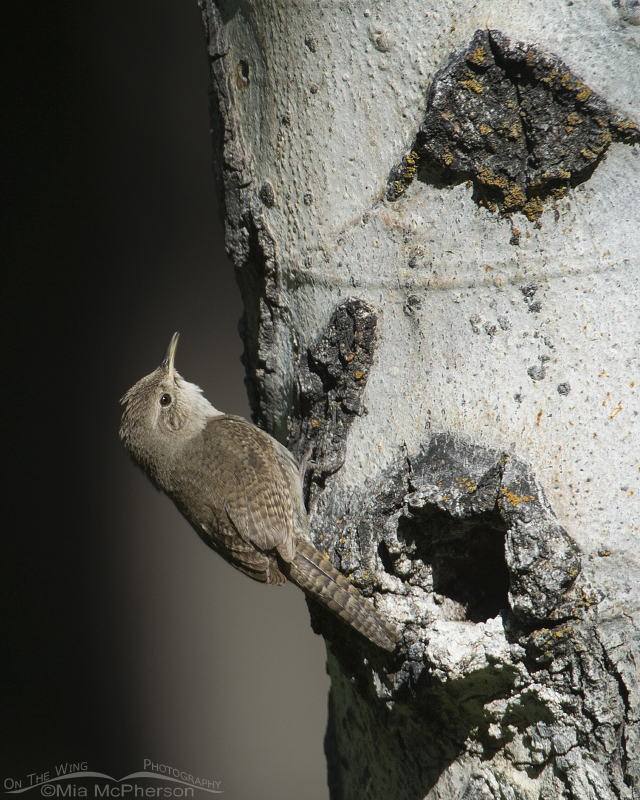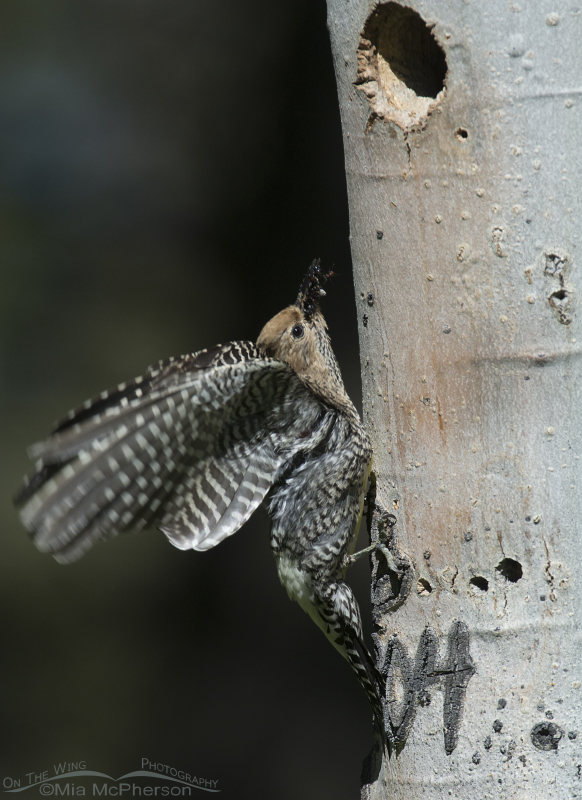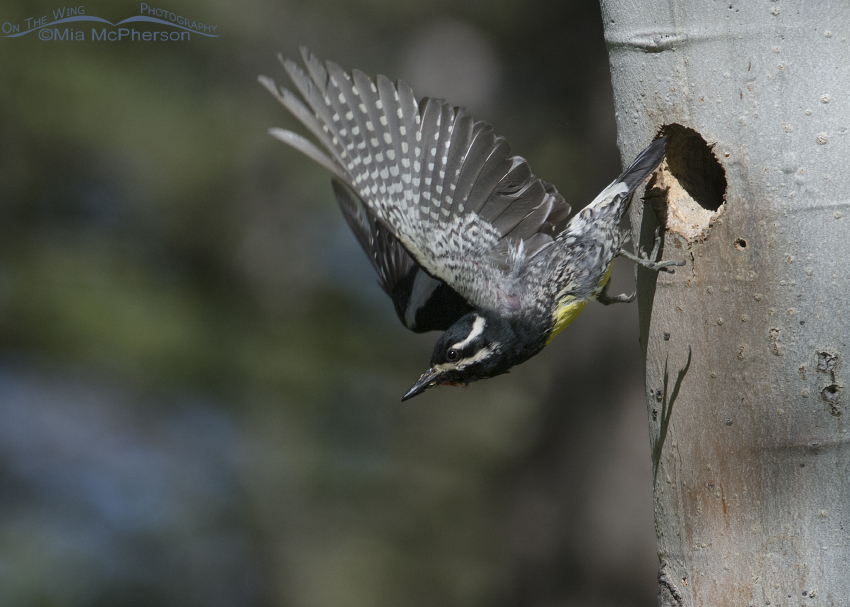 Tree Swallow at the Williamson’s Sapsucker nesting cavity
Tree Swallow at the Williamson’s Sapsucker nesting cavity
A month ago I photographed a pair of Williamson’s Sapsuckers excavating a nesting cavity in Clark County, Idaho and this past week I spent several days photographing them again. Like last month there were other birds flying into the area of the nesting tree checking out the cavity and activity in the vicinity of the aspen. The Tree Swallows are almost always present and their chattering is incessant, I even hear them long after leaving the area of the sapsucker nesting tree. They often sit in the branches above the cavity or fly down and check the hole out.
 Adult male Red-naped Sapsucker
Adult male Red-naped Sapsucker
This trip an adult male Red-naped Sapsucker landed on an adjacent Aspen before flying to the nesting tree to check it out as well.
 Red-naped Sapsucker checking out the Williamson’s Sapsucker nest cavity
Red-naped Sapsucker checking out the Williamson’s Sapsucker nest cavity
It was a wonderful surprise and gave me a chance to compare the size and plumage differences of the two species of sapsuckers. Red-naped Sapsuckers are smaller than the Williamson’s Sapsuckers and the male & female Red-naped look similar whereas the Williamson’s Sapsuckers display remarkable differences in plumage between sexes.
 House Wren checking out the Williamson’s Sapsuckers
House Wren checking out the Williamson’s Sapsuckers
The House Wrens are still at their nesting cavity below the Williamson’s Sapsucker cavity, still chattering away and at times bombarding the much larger Williamson’s Sapsucker at their nesting hole. It didn’t seem like the House Wrens had young until the last day when I finally noticed one of the birds bringing in prey to their nest.
 Female Williamson’s Sapsucker bringing ants to the nestlings
Female Williamson’s Sapsucker bringing ants to the nestlings
The were very busy bringing ants to their nestlings. I wondered quite often how they could fit so many ants in their bills. I could hear the young sapsuckers but they weren’t old enough to poke their heads out of the cavity yet. The adults continued to excavate inside the cavity which puts wood chips at the bottom of the cavity where the fecal sacks are excreted then the adults bring the sawdust covered fecal sacks out of the nest to leave some where away from the nesting tree.
 Male Williamson’s Sapsucker leaving the nesting cavity
Male Williamson’s Sapsucker leaving the nesting cavity
The male and female Williamson’s Sapsuckers made forays to their wells quite often to gather ants for their young. It was challenging to get images of the two when they flew away from the cavity due to lighting conditions and the difficulty in knowing exactly when they would fly.
This pair of Williamson’s Sapsuckers have unknowingly benefited other secondary cavity nesters by excavating nesting cavities. Swallows, bluebirds and wrens and nuthatches will be able to use the cavities for years to come and if you ask me that makes this a Magical Sapsucker Tree.
Mia
Click the following links to see more of my photos of the birds included in this post plus each page has facts and information about the individual species. Tree Swallows, Red-naped Sapsuckers, House Wrens, and Williamson’s Sapsuckers.
All images were taken using my Nikon D7100 and my Nikkor 200-400mm VR lens with the 1.4x TC attached. I am wiped out after the trip and haven’t the energy to place all of my techs here today.


I really enjoyed this informative post and all the wonderful images. Hope you’re having a great Independence Day Mia!
Magic indeed. The very best kind. Megathanks.
What a WONDERFUL series!!! Too much great stuff to even comment on! Love it!!!
Nice post, Mia – and terrific photos as well!
Gorgeous photos! Especially swallow
Wonderful images. What a great tree!